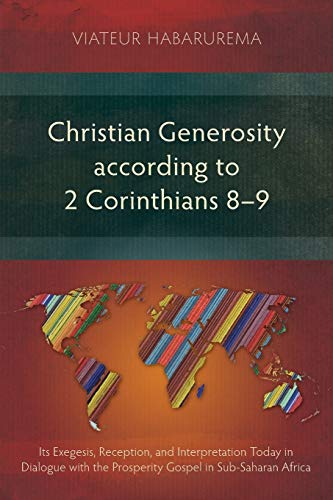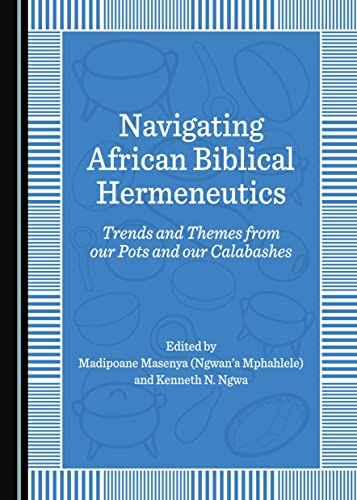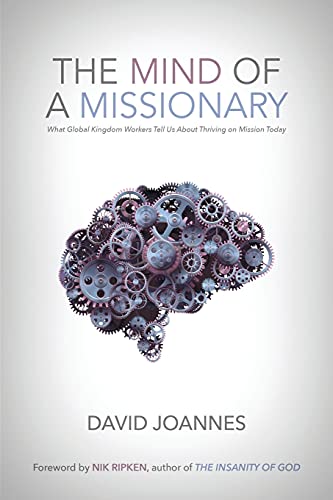Christian Generosity According to 2 Corinthians 8–9: Its Exegesis, Reception, and Interpretation Today in Dialogue with the Prosperity Gospel in Sub-Saharan Africa
Written by Viateur Habarurema Reviewed By Steven M. BryanThis fine work by Viateur Habarurema is a slightly revised version of a PhD dissertation presented to the Protestant Theological University in the Netherlands. Habarurema is a lecturer in New Testament at the Protestant University of Rwanda as well as a part-time pastor in the Pentecostal Church of Rwanda-ADEPR (Association des Églises de Pentecôte au Rwanda). He sets out to accomplish three goals. First, he seeks to understand the Apostle Paul’s instructions on the collection of money for the poor in Jerusalem and Christian generosity in 2 Corinthians 8–9. Second, he surveys the reception of those instructions among key interpreters of 2 Corinthians from Chrysostom to Calvin. Third, he evaluates the use of Paul’s instructions in the formulation of the “prosperity gospel” as promulgated within Pentecostal churches in Sub-Saharan Africa.
Habarurema rightly regards the last two objectives as the distinctive contributions of his work. This, however, is not to dismiss the value of his engagement with the biblical texts and, in particular, his careful analysis of the rich variety of ways that Paul uses the term, “grace” to root the motivation for generosity in the gospel. God’s grace in Christ toward the Corinthians stimulates their desire to participate in God’s gracious work to meet the needs of believers in Jerusalem. Having received the divine grace of financial assistance through the agency of other believers, the Jerusalem believers would in turn reciprocate. The reciprocation might take the form of thanksgiving and prayer for the Corinthians or even financial help should the economic situations of the two communities ever be reversed. At the center of this God-initiated fellowship of reciprocal grace is God himself, who becomes a participant in this dynamic, reciprocal exchange of grace. This communal context thus informs Paul’s understanding of what it means to have enough—what Paul calls “sufficiency” (2 Cor 9:8). Paul’s goal is not autonomy or self-sufficiency in service of self-enjoyment, as in a Greco-Roman context. Rather, he aims at the assurance of needs met by the dynamic of grace within community. The nature of grace is to overflow whatever it fills. Accordingly, “sufficiency” in Christian community is always the result of grace received and always results in grace given (p. 150).
Habarurema assumes (though he does not demonstrate) that some of African Christian thinking about these texts is shaped by the way they are interpreted in Catholic and Protestant traditions. Many African Pentecostals come from Catholic or Protestant backgrounds. This motivates his extended analysis of Chrysostom, Theodoret of Cyrus, Ambrosiaster, Thomas Aquinas, and John Calvin. None of this history of reception has any particular connection to Africa (with the possible exception of Ambrosiaster). Not all of Habarurema’s findings are wholly appreciative. He notes a theology of grace-motivated giving in these writers, and a motivation for generosity rooted in genuine care for poor. However, he also rejects the idea that almsgiving has an atoning function, a notion going back to the Apocrypha (e.g., Sir 3:30; Tob 4:10; 12:8–9) and found in Chrysostom. Habarurema believes that the theology of “recompense” that he finds in some of these writers—the idea that that God reciprocates giving with a reward—has carried over into the prosperity teaching of African Pentecostalism but without the accompanying qualification that the reward may be spiritual rather than material.
Habarurema begins his analysis of prosperity teaching by looking at factors that make African Pentecostalism particularly susceptible to the prosperity gospel. He cites, for instance, the embrace of mass media, the focus on physical healing, and a tendency to see widespread social problems as having spiritual not structural solutions. African Pentecostalism draws heavily on a sub-Saharan cosmology in which “the quest for life in fullness is conducted in a real combat against evil powers” and because of which the “talismanic and symbolic use” of the Bible is encouraged (pp. 236–40). Habarurema makes an interesting case that much of prosperity teaching is indigenous, that the influence is often from Africa rather than to Africa.
The final two chapters examine the nature of the prosperity gospel in African Pentecostal churches and their interpretation of 2 Corinthians 8–9. These churches often regard Christ’s atoning death as a basis for the Christian’s right and responsibility to claim not simply spiritual but material and physical blessings. Faith and prayer are the channels for these blessings, which are secured through the “spiritual law” of sowing and reaping. “The amount of the seed determines the extent of the harvest” (p. 256). The giving does not benefit the poor but a pastor or “a man or woman of God” whose luxurious lifestyle proves the spiritual law. This “transactional giving” resembles some features of African traditional religions in which prosperity and well-being are interpreted as deriving from properly performed religious obligations.
Habarurema does not see prosperity teaching in an exclusively negative light. He notes that the teaching takes Scripture seriously and attempts to relate Christian faith to the concerns of daily life. Nevertheless, he highlights problems of greed, inequality, and lack of accountability that tend to arise in churches that subscribe to prosperity teaching. More fundamentally, the focus on the material concerns of daily life often pushes the central concerns of the gospel to the margins. Consequently, the centrality of the cross and resurrection to Christian faith and life are lost along with a clear conception of the cruciform nature of the Christian life and ministry.
The final chapter engages the interpretation of 2 Corinthians 8–9 in the written work of six African prosperity preachers. Given that much prosperity teaching is communicated orally, the identification of written sources is an important contribution. However, all six preachers hail from either Nigeria or Ghana. Habarurema makes no attempt to assess the scope of their influence or whether these preachers are representative. Habarurema’s study does amply demonstrate the centrality of 2 Corinthians 8–9 for these prosperity preachers. They each understand this text as a guarantee that material sowing in faith automatically yields a proportional return of material abundance in this life. Such a reading ignores Paul’s clear concern for the grace-motivated alleviation of poverty among believers.
The book deserves a wide readership, especially by those preparing for ministry in contexts where authentic Christian faith is often undermined by prosperity teaching. This includes not only Christians in Africa but also Christians elsewhere who are increasingly subject to ideas originating in Africa. Habarurema’s solid exegesis, his understanding of the history of interpretation, and his analysis of the African contextual factors that shape prosperity teaching combine to make this book very important indeed.
Steven M. Bryan
Steven M. Bryan
Trinity Evangelical Divinity School
Deerfield, Illinois, USA
Other Articles in this Issue
This article is a brief response to Bill Mounce’s recent Themelios essay in which he argues that functional equivalence translations such as the NIV are the most effective approach to Bible translation as they carry over the meaning of the original text...
In 1 Timothy 2:15, Paul asserts “the woman will be saved through the childbirth...
This article argues that Paul compares the day of the Lord to a thief in the night in 1 Thessalonians 5:2 because of the influence of Joel 2:9...
The Jerusalem Donation was the Apostle Paul’s largest charity drive...






